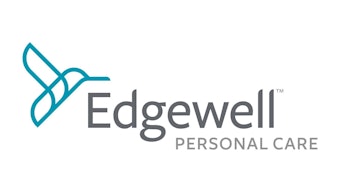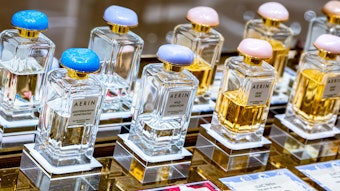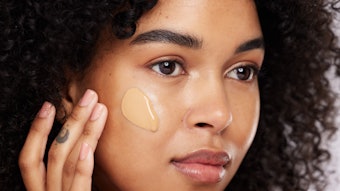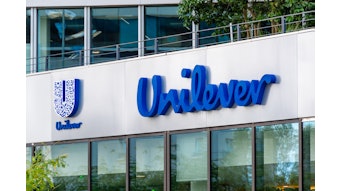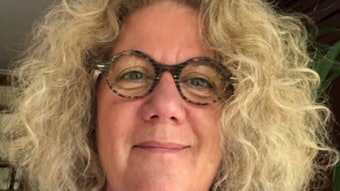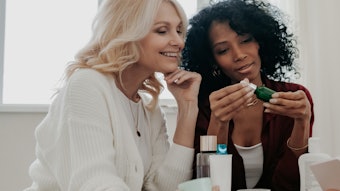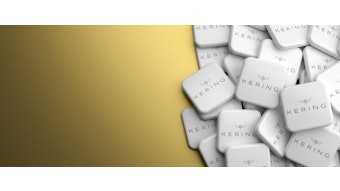
Over the past six years, Henkel has calculated the environmental footprint of more than 200,000 product formulations and is comparing data for all relevant raw materials to help improve the sustainability of its formulas.
At the same time, its "Be smarter. Recycle.” initiative has launched to educate consumers about the correct handling of waste and recyclability of various types of packaging. And, in Europe and Asia, Henkel offers refills stations in select salons.
Report: 3 Dimensions of Sustainable Beauty in 2023
To get a better sense of how this consumer product giant is retooling its products, Global Cosmetic Industry interviewed Vildan Oenpeker-Cerci, head of beauty for Henkel North America.
Here's what she had to say.
Applying learnings from a 200K product review
Reviewing the environmental footprint of 200,000 product formulas is a massive undertaking, but critical if we are to advance sustainability across the beauty sector. Each formula was assigned a compact sustainability report that summarizes information related to carbon footprint, biodegradability, data on ingredients of natural origin.
This makes it possible to compare sustainability profiles and provides easy access to information about how our formulas contribute to sustainability as well as full transparency about potential optimization approaches for reducing an overall footprint for a product. Our formulation team was able to understand the impact of their choices on biodegradability during the formulation process.
As a result, our new Dial Spring Water body wash has improved biodegradability in comparison to the prior version.
Accounting for consumer use of products
Another major factor is what happens when customers use the products. Our own internal analysis found that the use phase accounts for up to 90% of the environmental footprint of several of our products, so it’s important we find ways to encourage responsible behavior by customers alongside reducing the impact of the product itself.
We created the footprint calculator that shows how companies and people can contribute to sustainability efforts through their behavior. The calculator provides users with an estimated carbon footprint based on their answers to simple questions about their daily life, users can also compare their results with the worldwide average.
Leveraging the EcoBeautyScore
We also partnered with cosmetics companies to establish the EcoBeautyScore Consortium in 2021. Through the consortium we are aiming to develop an industry-wide system for assessing the environmental impact of cosmetics to help improve consumers sustainable shopping experience.
The EBS Consortium has developed a scientific footprint calculation based on the life cycle assessment methodology of the European PEF project. This was realized for the first product segments in 2022. This ongoing work will be extended to build an IT solution for routine calculation for even more product segments.
Applying sustainable thinking to product innovation
The work so far has really helped us embed sustainability into the decision making process. As an example, we focused on developing products that don’t require the use of resources like water or that enables water to be used efficiently. In 2021, our products that don’t require the use of warm water such as dry shampoo and leave-in conditioner allowed consumers to save around 200,000 metric tons of CO2 emission.
To contribute to our sustainability targets, we are constantly developing new methods and tools to assess our progress in addition to reviewing our management processes and optimizing them where needed. We have a variety of tools to systematically analyze, measure and evaluate our products during the innovation process.
We use the data to develop sustainability profiles for each product which includes identified points in the value chain where the product offers sustainable advantages. We also integrate the environmental profiles of possible raw ingredients and packaging materials into our product and packaging development teams’ information systems to make it easier to optimize our products while they are being developed.
This process enables us to calculate the footprints of new formulations as early as the development phase.
Addressing Scope 3 (consumer use-phase) emissions
Promoting the concept of a circular economy is one of our key approaches to sustainable value creation. We believe that reducing or eliminating packaging material, especially for our beauty goods, is the best way to minimize waste and the related negative environmental effects.
We aim to reduce the amount of packaging material we use to a minimum, without compromising the quality or safety of our products.
Our Be Smarter. Recycle. program explains how consumers can help conserve resources by providing information about handling waste and the recyclability of various types of packaging. Since launching the program, it has helped us increase education and awareness for our consumers. The program now encompasses 30 brands and more than 100 countries.
Promoting a more circular economy
Our strategy to promote the circular economy when it comes to packaging is centered around three pillars, including intelligent packaging design and reduction of packaging material, use of materials from sustainable sources, and closing the loop together.
With closing the loop together, we work with our retail partners to help consumers use and dispose of our products responsibly.
Our Authentic Beauty program is part of that effort and offers refill stations in hair salons across Europe and Central Asia. Salon clients receive their own Authentic Beauty Concept product(s) in a bottle made from 90% post-consumer recycled (PCR) plastic and can bring them back to the salon to be refilled.
We know consumers are looking for ways to adopt more sustainable habits and behaviors and this unique program aimed at helping reduce plastic waste and more conscious choices.
